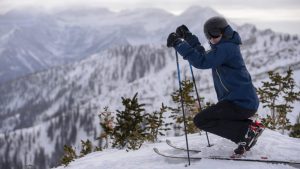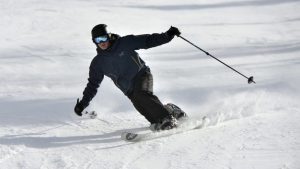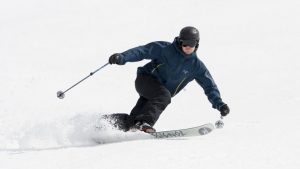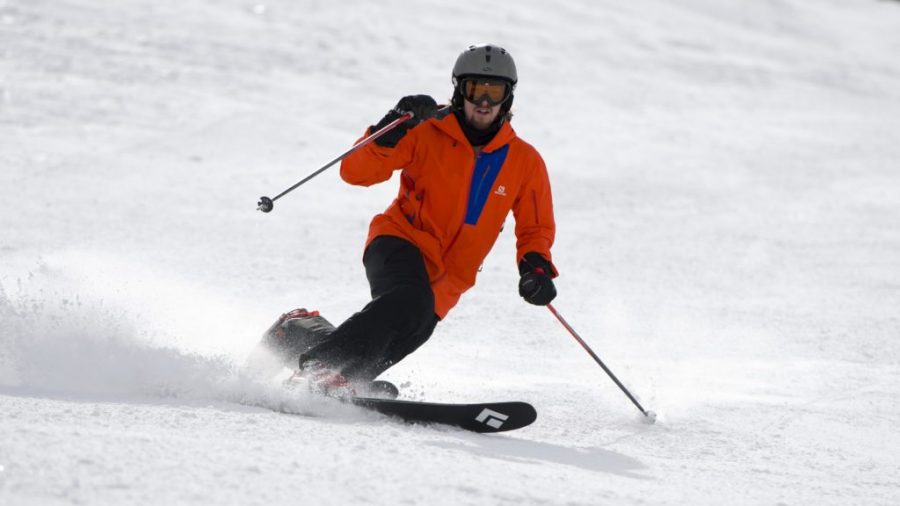Telemark skiing is the concatenation of Alpine and Nordic skiing. In Alpine skiing you can only go down the hill (depending on your bindings) and Nordic skiing allows you to travel great distances on flat surfaces. Telemark combines the best of both worlds by not attaching your heel to the ski. When you want to go downhill, you have the option to allow the boot to stay in a relative alpine position and when you want to tour, the boot flexes, allowing for greater movement and flexibility.

Telemark skiing was first introduced back in the 1800s in the region of Norway known as Telemark. It has become more popular due to more advanced technology, increasing the draw to backcountry skiing. One of the original binding mechanisms that attaches the ski boot to the ski was called a “three pin,” a term many skiers may have heard before. There were three metal pins to allow the metal prongs of the binding to secure the boot in place for touring. That has been replaced with touring bindings that use springs and carriages to hold the boot in place on the ski. More modern bindings allow the Telemark ski to have a brake which prevents the ski from sliding down the mountain when the boot is removed from the binding. This is known as an NTN binding and eliminates the unreliable cable system as well as provides a safety mechanism when a skier is in trouble. The NTN bindings are releasable just like traditional alpine bindings.
What is all the hype and craze with Telemark skiing? From my own experience, Telemark skiing is not for the faint-hearted. The sport is excruciatingly difficult because not only do you have to ski down the hill, but in order to make the proper Telemark turn, you need to lunge into position and hold your body weight up on one leg as you do so. You will typically feel a burning sensation in both of your thighs after long runs. Sometimes you feel as though you don’t have any additional leg strength to hold yourself up after making a successful turn. That is normal.

Here is the inside scoop as to why you should Telemark ski: Telemark skiing is beautiful. The turns are more graceful as you meander down the mountainside, creating a more drawn out “S” shape. Other skiers on the mountain will watch and comment as you gallantly ski by them. I have had my fair share of skiers comment on the beauty and grace of the Telemark turns, something I have never experienced on alpine skis before. It is a great feeling inside knowing that what you are doing is inspiring to others.
With the new technology that ski companies have been putting into their outdoor equipment, it is unbelievable how amazing the equipment is today. The boots that I had five years ago don’t even compare. The new boots have better liners to keep your feet warm when you are skiing, and the flex at the toe is on par with walking in leather boots. The rigidity and stiffness of the boots allows you to lunge further than you could ever have imagined before. Most importantly, the ski manufacturers are looking out for safety. Traditional Telemark bindings would not disengage in the event of an accident, resulting in a knee injury that typically results in knee surgery. Borrowing a solution from alpine, Telemark boots will now eject from the binding when the specified torque has been reached.

For those of you who want to get into Telemark skiing, the University of Utah Outdoor Recreation Program (ORP) is the perfect place to rent the gear and give it a shot for a weekend. With their excellent student rate prices, it is a no-brainer if you are thinking of escalating your skiing skills. You’ll be surprised after a few days on the slopes at how much stronger your legs will feel, and you’ll get to enjoy the beautiful snow covered great outdoors in a new way.



